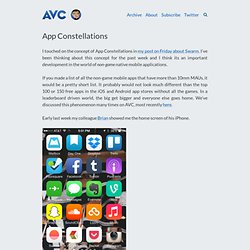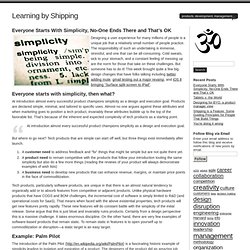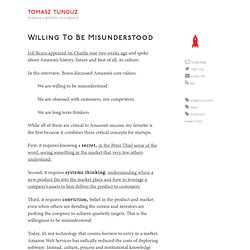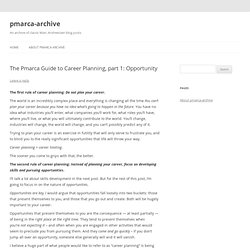

Board Observers Weekly - May 27th, 2014. The New York Times KPI’s. Here are numbers lifted form the NYT’s Innovation report (see last week) and other sources.

Most of The New York Times’ reach comes from its digital audience. Regardless of the metric, viewers on desktops and mobile are crushing print readers. Why Your Startup is More Likely to Succeed if You’re Authentic and Passionate. In my Twitter bio is says that I’m “looking to invest in passionate entrepreneurs,” which almost sounds like I was just looking for a cliché soundbite to describe myself.

Yet along with “authenticity” they are two of the key attributes I look for when I meet with companies I may consider funding one day. Passion is also the featured heavily in nearly every presentation I give to entrepreneurs or on college campuses or in talks with MBA students. We live in interesting times where working at a startup is glamorized to the point that many founders even refer to their team members as “rock stars,” which to my ears is cringe worthy. Great programmers are artists, for sure, but rock stars is about the last definition I’d choose. The reality is quite the opposite. App Constellations. I touched on the concept of App Constellations in my post on Friday about Swarm.

I’ve been thinking about this concept for the past week and I think its an important development in the world of non-game native mobile applications. If you made a list of all the non-game mobile apps that have more than 10mm MAUs, it would be a pretty short list. It probably would not look much different than the top 100 or 150 free apps in the iOS and Android app stores without all the games.
In a leaderboard driven world, the big get bigger and everyone else goes home. We’ve discussed this phenomenon many times on AVC, most recently here. Early last week my colleague Brian showed me the home screen of his iPhone. Everyone starts with simplicity, no-one ends there and that’s OK. Designing a user experience for many millions of people is a unique job that a relatively small number of people practice.

The responsibility of such an undertaking is immense, stressful, and one that can be all-consuming. Cold sweats, sick to your stomach, and a constant feeling of messing up are the norm for those that take on these challenges. But someone has to do it! This week brought quite a few big design changes that have folks talking including twitter adding mute, gmail testing out a major revamp, and iOS 8 bringing “Surface split-screen to iPad”. Everyone starts with simplicity, then what? At introduction almost every successful product champions simplicity as a design and execution goal. At introduction almost every successful product champions simplicity as a design and execution goal. Willing to be misunderstood. Jeff Bezos appeared on Charlie rose two weeks ago and spoke about Amazon’s history, future and best of all, its culture.

In the interview, Bezos discussed Amazon’s core values: We are willing to be misunderstoodWe are obsessed with customers, not competitors.We are long term thinkers While all of them are critical to Amazon’s success, my favorite is the first because it combines three critical concepts for startups. First, it requires knowing a secret, in the Peter Thiel sense of the word, seeing something in the market that very few others understand. Second, it requires systems thinking, understanding where a new product fits into the market place and how to leverage a company’s assets to best deliver the product to customers. Third, it requires conviction, belief in the product and market even when others are deriding the notion and investors are pushing the company to achieve quarterly targets.
Amazon's profits. This chart shows the revenue segments that Amazon reports. These are in different industries, at different stages of development, and in different markets. It seems pretty likely that their underlying economics are different too. Not, that is, the FCF or net incomes that Amazon reports after all that re-investment, but the underlying performance of the divisions. Moreover, even this isn’t the full story, since Amazon is actually a lot more atomised. Most separate product lines have their own internal owner and P&L by country or region (with a lot of internal transparency, incidentally). Meanwhile, Amazon is constantly creating new business lines.
This means that Amazon's earnings are actually driven a mix of four overlapping factors: The Pmarca Guide to Career Planning, part 1: Opportunity. The first rule of career planning: Do not plan your career.

The world is an incredibly complex place and everything is changing all the time.You can’t plan your career because you have no idea what’s going to happen in the future. You have no idea what industries you’ll enter, what companies you’ll work for, what roles you’ll have, where you’ll live, or what you will ultimately contribute to the world.
You’ll change, industries will change, the world will change, and you can’t possibly predict any of it.